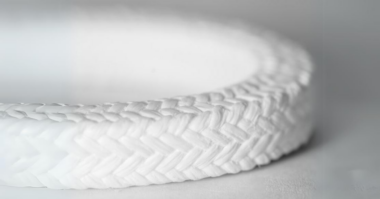Author: Bob Latino CEO at Reliability Center, Inc.
Author’s Note: I want to reiterate that this Series about reading the basic fracture surfaces, is for novices who often first come into contact with such failed components. This Series is about the basics (101), and is intended to give readers an appreciation for the value of such ‘broken’ parts to an effective investigation/Root Cause Analysis. While this information will be rudimentary to seasoned materials engineers, I know they will all appreciate heightening awareness to the need to retain such failed parts for analysis, versus throwing them away and just replacing the part. Throwing away failed parts is a recipe for a repeat failure, when one does not understand why the part failed in the first place.
In Part I of this series, we focused on Erosion and Corrosion as the the first two (2) basic root causes of component failure. When Erosion and Corrosion are apparent, there is generally a loss of metal in some form or fashion.
Figure 1: How Material Failure Occurs
In this final follow-up of this series, we will focus on Overload, where generally the material is overpowered.
Material Overload is the failure or fracture of a material with a single load application.
When applying this knowledge to a Root Cause Analysis (RCA), the construction of the Logic Tree (or whatever expression you prefer to use) may look like the following:
Figure 2: How Failure Patterns Work into a Root Cause Analysis
The ‘parent’ node would indicate which component failed (i.e. – shaft failure). The ‘child’ nodes would represent the potential hypotheses to the question ‘How could the shaft have failed?’ The broad and all-inclusive possibilities would be; erosion, corrosion, fatigue and overload. At this stage our metallurgical analysis would tell us which of these failure patterns occurred. It could be one of them or a combination; a trained eye will tell us.
Once we know which pattern(s) is a FACT, then we simply keep drilling down and ask ‘How could the component have been fatigued (example), resulting in the undesirable outcome being experienced?’. How this all fits into the RCA process is described in many of our other blogs, feel free to visit them (https://www.linkedin.com/in/bob-latino-3411097/recent-activity/posts/).
Some reasons materials could be overloaded:
- Wrong material for the application
- Excessive stress or strain
- Flaw in the material
- Sudden increase in load or blockage (process changes)
- Foreign object seized material (gears)
- Foreign object strikes material
- Operating equipment outside of its design capabilities
Component overload examples:
- Shaft Overload
- Fastener Overload
- Hook Overload
- Anchor Overload
- Gear Overload
Overload fractures generally fall into two (2) categories, Brittle and Ductile. As you will see from the following examples, Brittle fractures typically exhibit a ‘salt and pepper’ appearance on the fractured surface with a relatively clean break (lack of variation on the fracture surface). Ductile fractures generally exhibit a deformation of the material in some form or fashion.
In Overload cases, the chevron marks will again point towards the origin of the failure.
Figure 3: Graphical Representation of Overload Pattern
As in Figure 3, you can clearly see this pattern on the failed component.
Figure 4: Example of Chevron Marks Pointing to Failure Origin
In Figure 5 we show a clear contrast between Ductile and Brittle failure patterns using fasteners.
Figure 5: Ductile vs. Brittle Fracture Surfaces on Fasteners
Lets look at some more examples using varied components.
Figure 6: Brittle Overload of Gearbox Shaft
Figure 7: Ductile Overload of Gearbox Shaft
Now let’s take a look at fasteners and look for the same patterns to identify whether they are brittle or ductile failures.
Figure 8: Brittle Overload of Fastener
Figure 9: Brittle Overload of Fastener (2)
Figure 10: Ductile Overload of Fastener
Let’s move on to a hook failure and look for similar characteristics of the failed surfaces. Is this a brittle or ductile failure based on its characteristics?
Figure 11: Brittle Overload of Hook
As the caption for this figure states, this is a Brittle Overload. See, it gets easier as we compare and contrast more examples. Let’s try again on an Anchor. We can tell it’s an overload, but which type?
Figure 12: Brittle Overload of Anchor
No deformation, but characteristics of a clean break from being overpowered. In such cases the opposite sides of the same failed components can often be fitted together to demonstrate they were the same part at one time.
Last shot, Brittle or Ductile failure of Gear teeth?
Figure 13: Brittle Overload of Gear Teeth
This will conclude this Series about the four (4) primary Root Cause of component failure.
Read Part 1 | Read Part 2
I appreciate all of the great feedback and the sharing from the metallurgical veterans!! Thank you for your time and participation.
Below are some additional resources:



















Comments